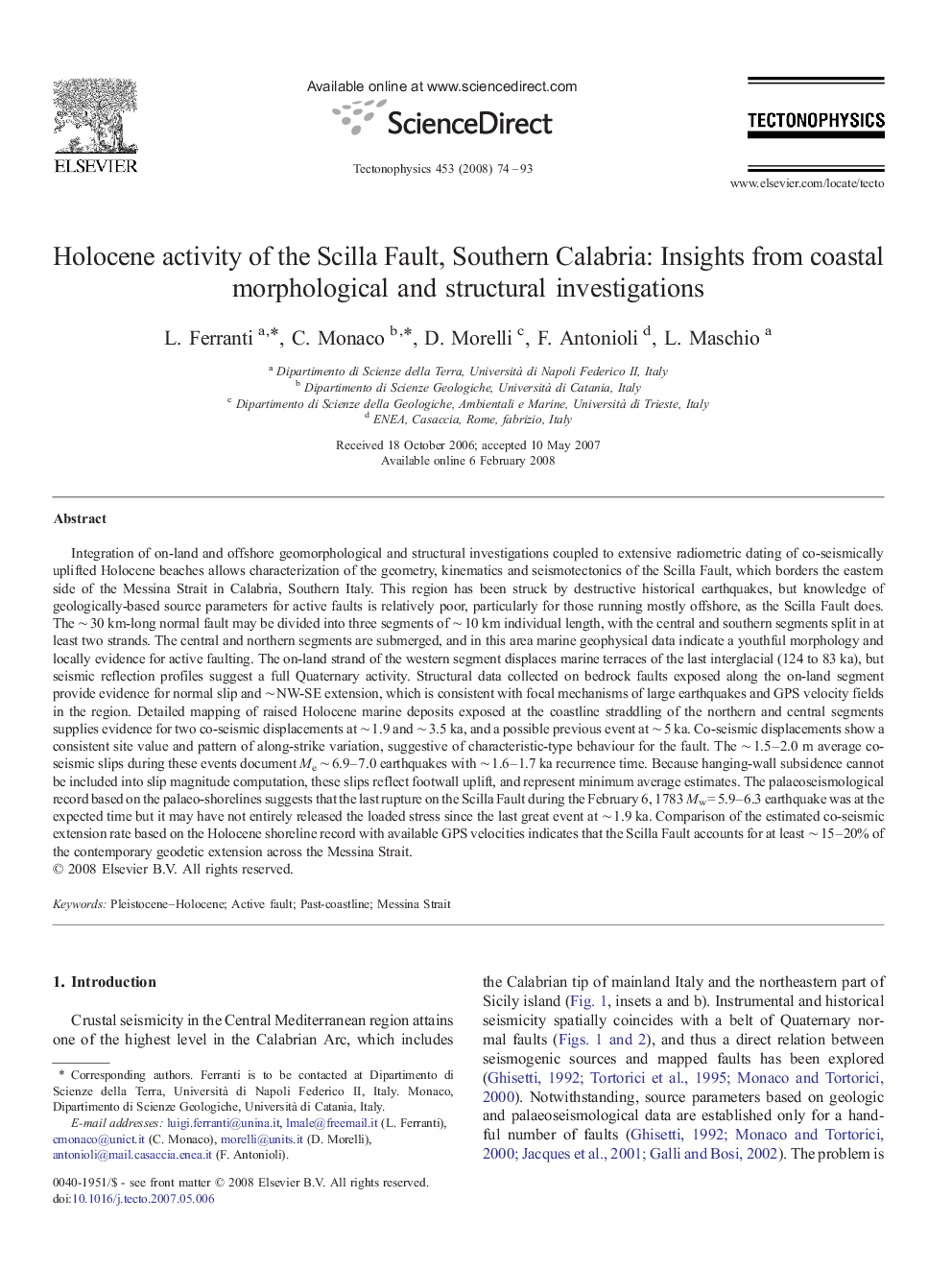| کد مقاله | کد نشریه | سال انتشار | مقاله انگلیسی | نسخه تمام متن |
|---|---|---|---|---|
| 4694532 | 1636914 | 2008 | 20 صفحه PDF | دانلود رایگان |

Integration of on-land and offshore geomorphological and structural investigations coupled to extensive radiometric dating of co-seismically uplifted Holocene beaches allows characterization of the geometry, kinematics and seismotectonics of the Scilla Fault, which borders the eastern side of the Messina Strait in Calabria, Southern Italy. This region has been struck by destructive historical earthquakes, but knowledge of geologically-based source parameters for active faults is relatively poor, particularly for those running mostly offshore, as the Scilla Fault does. The ∼ 30 km-long normal fault may be divided into three segments of ∼ 10 km individual length, with the central and southern segments split in at least two strands. The central and northern segments are submerged, and in this area marine geophysical data indicate a youthful morphology and locally evidence for active faulting. The on-land strand of the western segment displaces marine terraces of the last interglacial (124 to 83 ka), but seismic reflection profiles suggest a full Quaternary activity. Structural data collected on bedrock faults exposed along the on-land segment provide evidence for normal slip and ∼ NW-SE extension, which is consistent with focal mechanisms of large earthquakes and GPS velocity fields in the region. Detailed mapping of raised Holocene marine deposits exposed at the coastline straddling of the northern and central segments supplies evidence for two co-seismic displacements at ∼ 1.9 and ∼ 3.5 ka, and a possible previous event at ∼ 5 ka. Co-seismic displacements show a consistent site value and pattern of along-strike variation, suggestive of characteristic-type behaviour for the fault. The ∼ 1.5–2.0 m average co-seismic slips during these events document Me ∼ 6.9–7.0 earthquakes with ∼ 1.6–1.7 ka recurrence time. Because hanging-wall subsidence cannot be included into slip magnitude computation, these slips reflect footwall uplift, and represent minimum average estimates. The palaeoseismological record based on the palaeo-shorelines suggests that the last rupture on the Scilla Fault during the February 6, 1783 Mw = 5.9–6.3 earthquake was at the expected time but it may have not entirely released the loaded stress since the last great event at ∼ 1.9 ka. Comparison of the estimated co-seismic extension rate based on the Holocene shoreline record with available GPS velocities indicates that the Scilla Fault accounts for at least ∼ 15–20% of the contemporary geodetic extension across the Messina Strait.
Journal: Tectonophysics - Volume 453, Issues 1–4, 16 June 2008, Pages 74–93